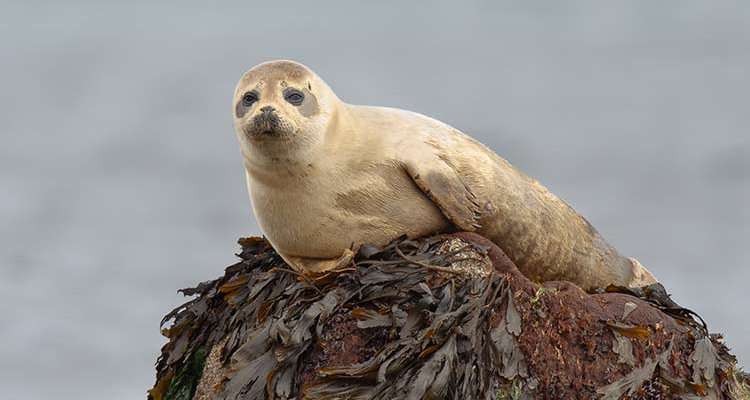Seals and our shores

Scottish legend is full of tall tales of selkies, the mythical and beautiful seal-folk who shed their skins to become people, leaving sea for shore. Such popular, lasting stories show how important seals were to remote coastal communities across Scotland in the past. Marine mammals were a vital source of food and of oil, for heat and light, which islanders, in particular, relied upon.
Today, seals' relationship with people has changed significantly but they are no less important. Now, more than ever, the focus is on ensuring that our survival does not threaten theirs.
These days seals are one of the nation's most popular attractions on wildlife tours and are a major link in the biodiversity chain. Without them, our seas would not have the same rich variety of flora and fauna.
But the same waters which bring countless visitors from near and far are also increasingly being turned to as a solution to our growing demand for new energy sources and expanding infrastructure, like the new Forth road bridge, to cater for the escalation of traffic in modern times.
For the past few decades, the Sea Mammal Research Unit (SMRU) at St Andrews University has conducted world-leading research providing NERC with crucial scientific evidence for the Scottish Government to make decisions on how to forge a sustainable future for people and marine mammals alike.
Decline and fall
Arguably, the most important data gathered by the unit's experts is on the changing populations of Scotland's two seal species, the grey and the harbour - or common - seal.
Their findings have revealed stark differences in the animals' fortunes since the 1980s. Grey seal numbers in the North Sea are rocketing, while harbour seals off Scotland's east coast and the Northern Isles plummet.
Professor Ailsa Hall, the unit's director, said:
"What is causing this decline in harbour seals is a major concern, and the Scottish Government is providing additional funding to SMRU so we can continue our investigations in a five-year project which is currently underway."
Possible causes of the declining population of harbour seals include competition between grey and harbour seals and the effect of toxins from harmful algae.
The unit is also conducting a separate five-year study into the potential impact of the vast tidal energy scheme planned for the Pentland Firth between Orkney and mainland Scotland.
Collision course with tidal energy
The same tidal streams that are so attractive to the growing marine energy industry also draw vast shoals of fish. Foraging seals follow the fish, raising the risk that underwater turbine blades could injure or kill them.
Previous studies by the unit looking at another potential tidal energy site off the Scottish coast found that seals were attracted to the fast-flowing waters due to the migrating fish which passed through, almost as if on a conveyor belt, providing a relatively easy meal.
Other SMRU research funded by NERC found that the noise of tidal turbines led to a marked change of behaviour in harbour seals, which stayed up to 500 meters away.
Professor Hall adds:
"This behaviour may help reduce collisions between seals and turbines but potentially at the cost of excluding them from key foraging and breeding areas."
These results are now being used to predict the effects of future tidal turbines on seals.
Meanwhile, Scotland's lucrative aquaculture industry and salmon rivers have been another key focus of work by SMRU. Experts have found that devices emitting sounds the seals dislike can be very effective in discouraging the animals from preying on the fish, helping to reduce demand for licences granted for killing the predatory mammals as an alternative method of protecting multimillion pound fishing businesses. This is particularly important for Scottish salmon exports as the USA will soon be restricting the import of fish from countries that use lethal methods to protect their fisheries from marine mammals.
Seals in numbers:
5,000
Fewer harbour seals counted in Scottish waters in 2016 than in 2001 (down from 30,000 to around 25,000).
FIVE
Number of years SMRU are due to study the possible impact on seals of the huge tidal power scheme off Orkney in the Pentland Firth, including the risk that the creatures could be harmed or killed by colliding with turbine blades.
65 million
Pounds per year which wildlife tourism has been found to be worth in Scotland. Seals are among the popular animals visitors come to see.
FIFTY
Percentage of Scotland's energy needs which the Scottish Government aims to generate from renewable sources by 2030, with marine schemes expected to play a major role in achieving that goal.
14,000
More grey seal pups born in the North Sea off Scotland in 2014 than in 2001 (up from around 19,000 to more than 33,000).
Provided by PlanetEarth Online
This story is republished courtesy of Planet Earth online, a free, companion website to the award-winning magazine Planet Earth published and funded by the Natural Environment Research Council (NERC).
















